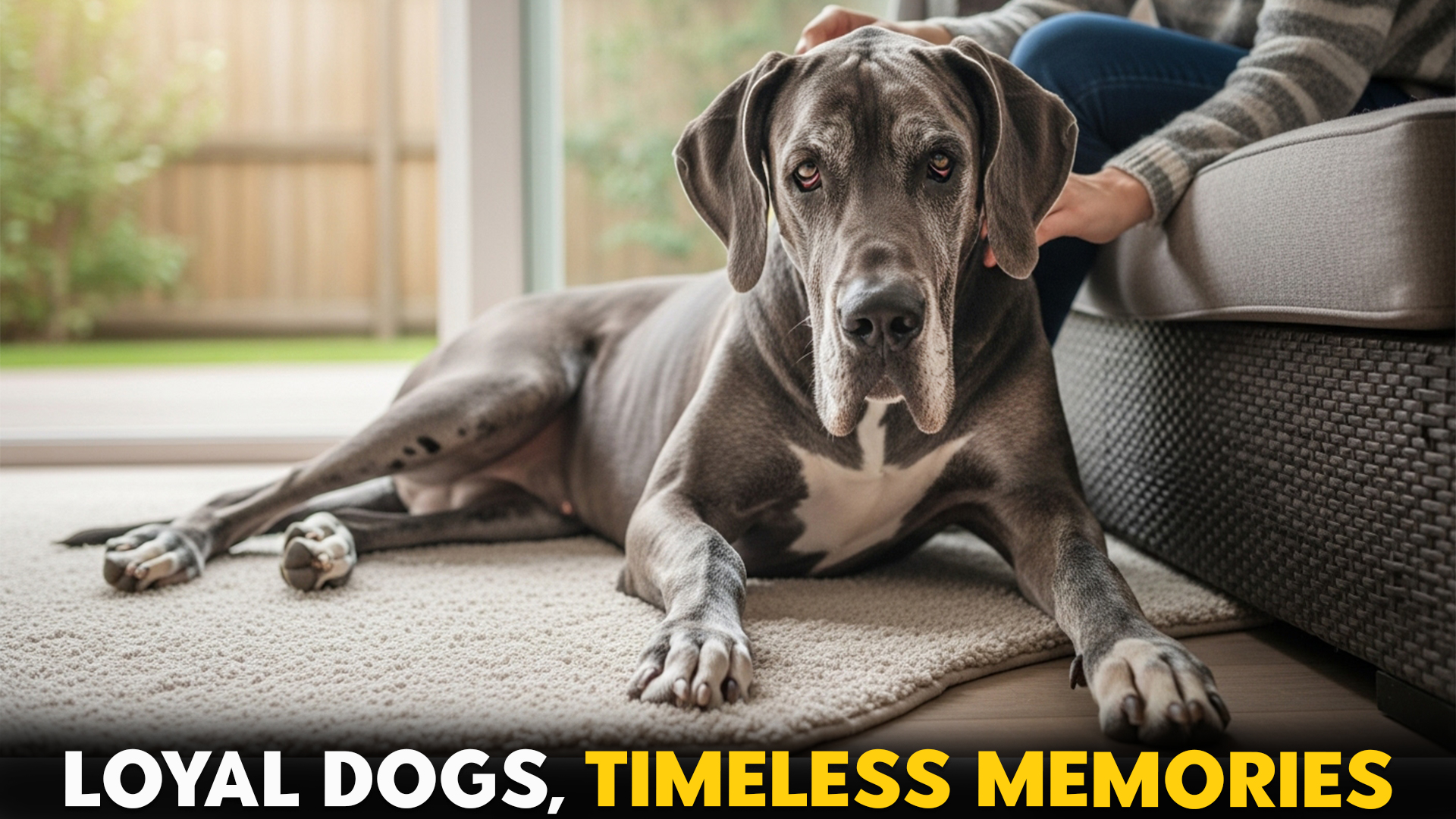Opening your home to a dog is like inviting a heartbeat that belongs to someone else. Their wagging tails, warm snuggles, and playful eyes can light up even the darkest days. But for certain breeds, their time with us is shorter than we wish, making every moment feel fleeting.
Watching a furry friend grow, love, and leave paw prints on your heart is a beautiful yet bittersweet journey. Large and giant dogs, in particular, often face health concerns that limit their healthy life, from joint issues to heart disease, reminding us how precious every day truly is.
Understanding dog breeds with shorter lifespans helps us embrace love fully, without taking a single cuddle for granted. This guide explores dogs who live fast, love hard, and leave memories that last a lifetime, helping readers cherish each heartbeat, wag, and moment of joy.
Short-Lived Dog Breeds You Should Know
1. Great Dane
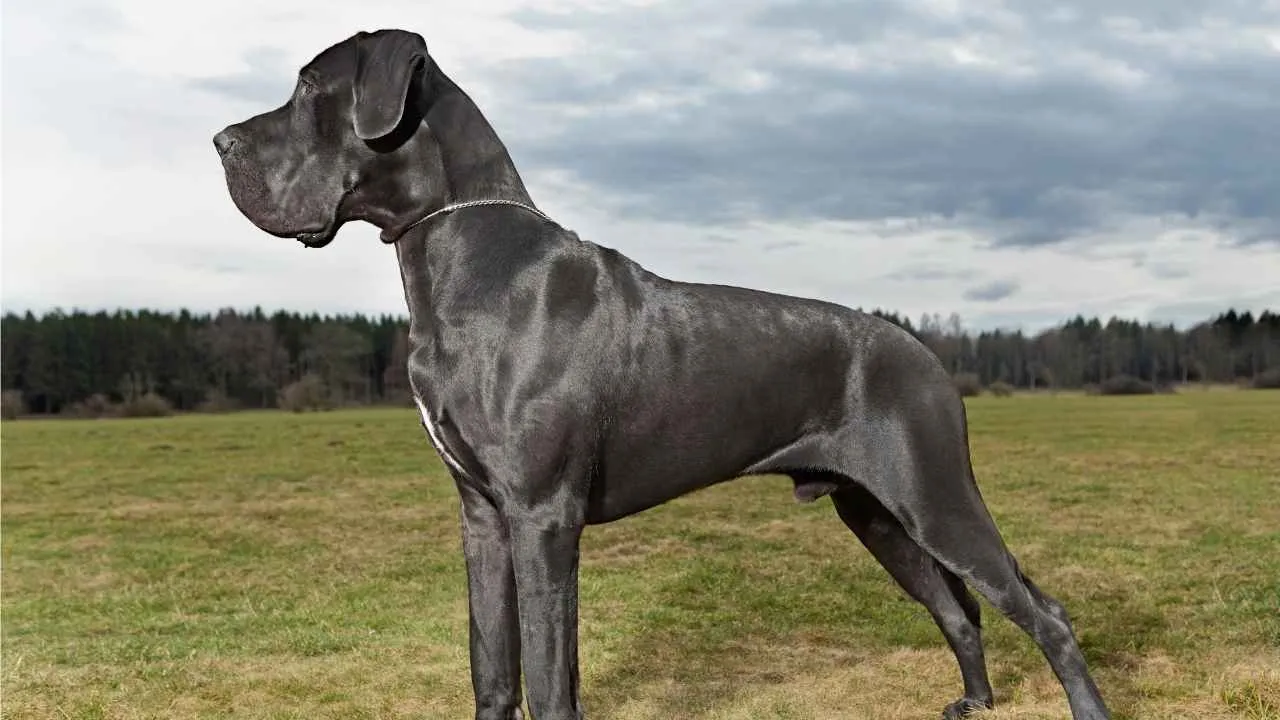
The Great Dane is a gentle giant originally bred for hunting and estate guarding. Known for their calm and affectionate nature, they make excellent family dogs. Their towering presence and friendly temperament leave lasting impressions on all who meet them.
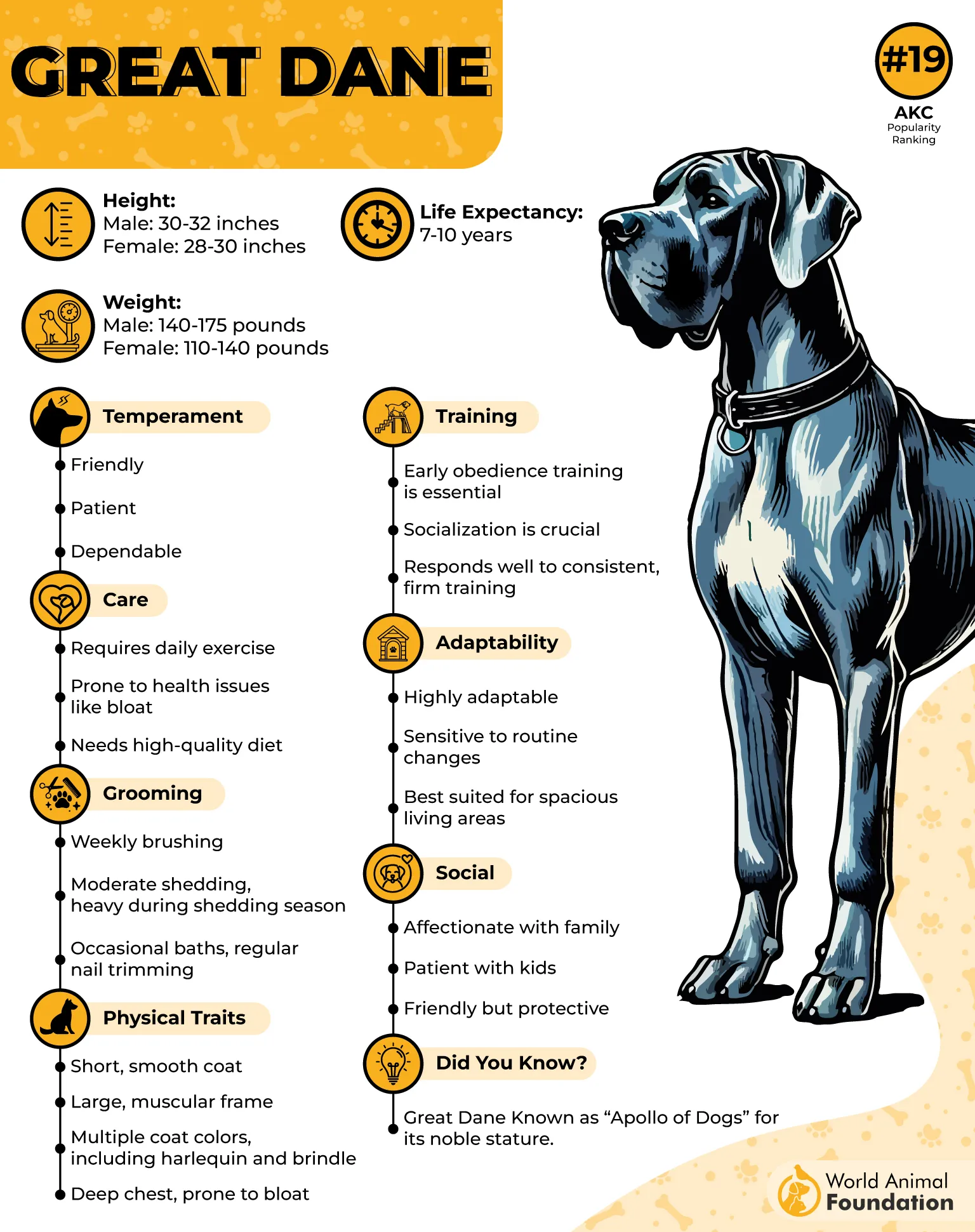
Lifespan and Health Concerns
Great Danes have a shorter lifespan than many other breeds, typically living seven to ten years. As per PetMD, one of the most serious conditions affecting Great Danes is gastric dilatation volvulus (GDV), a severe form of bloat that can become life-threatening in less than 24 hours.
They are also prone to hip dysplasia, heart disease, and degenerative myelopathy. Awareness of these risks helps owners provide timely care and support a longer, healthier life.
Tips for Owners
Provide early socialization to build confidence and reduce anxiety.
Maintain regular exercise and mental stimulation through daily walks, gentle play, and obedience games.
Keep your dog at a healthy weight to reduce back, joint, and mobility issues.
Ensure a balanced diet, preventive care, and regular veterinary visits.
Watch for early signs of illness, including GDV, to keep your dog safe and comfortable.
2. Bernese Mountain Dog
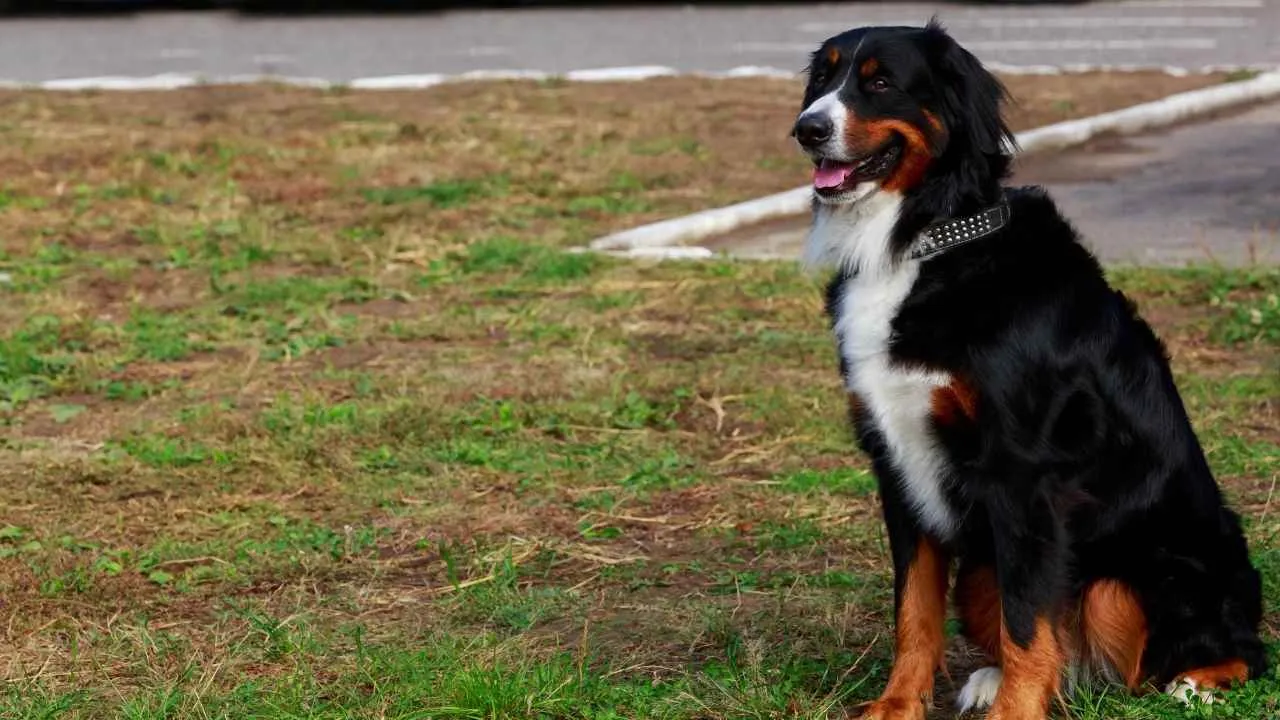
The Bernese Mountain Dog is one of the large breeds that is a gentle giant, originally bred in Switzerland as a farm dog. Known for their calm and affectionate temperament, they now make loving family pets, according to AKC. Their calm temperament and loyalty make them a joy to have at home.
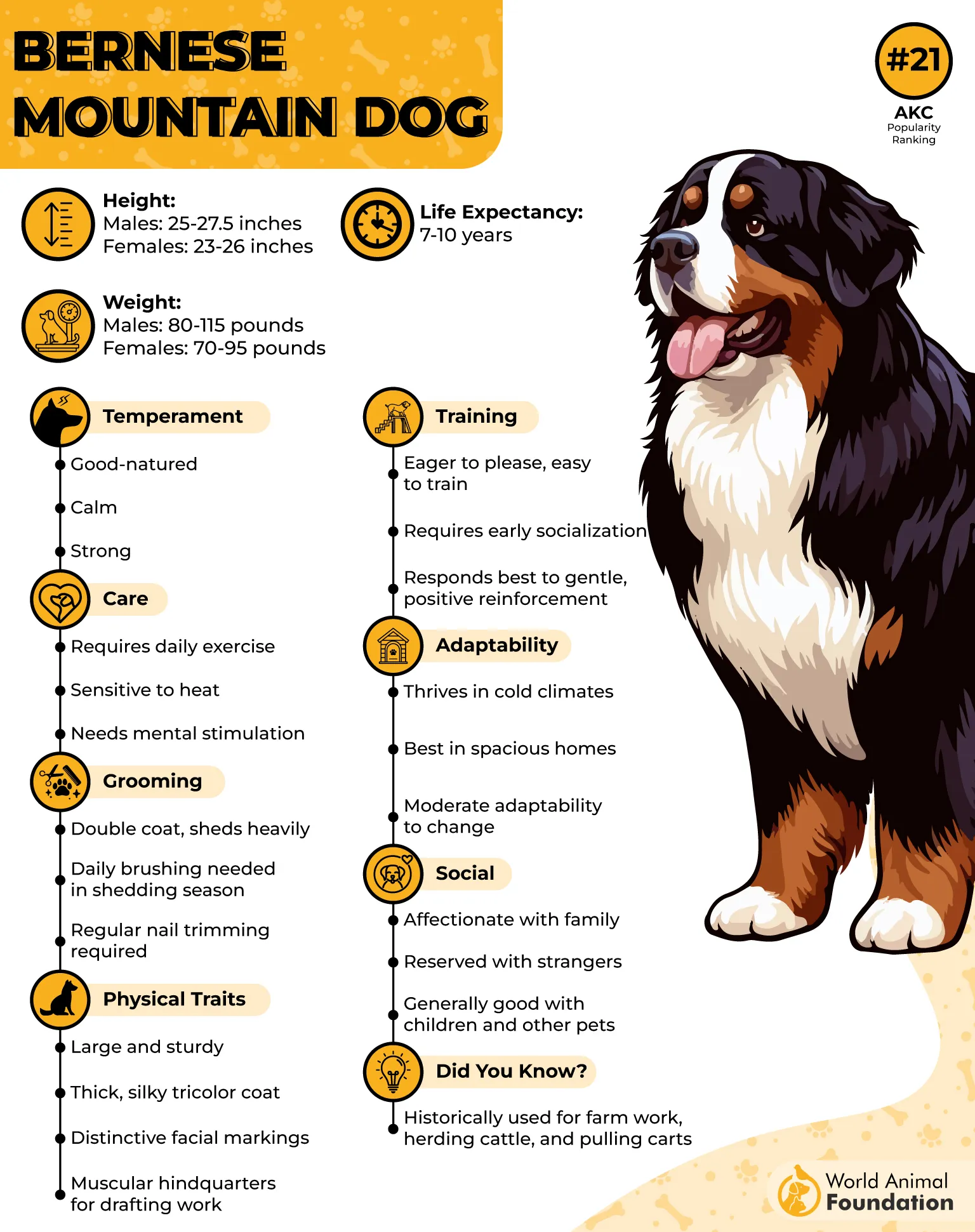
Lifespan and Health Concerns
Bernese Mountain Dogs typically live seven to ten years, average for a large breed. One serious health issue is gastric dilatation volvulus (GDV), which requires immediate veterinary intervention.
They are also prone to hip and elbow dysplasia, as well as certain cancers like histiocytic sarcoma. By staying informed about breed-specific challenges, you can take preventive steps that keep your dog comfortable and thriving
Tips for Owners
Provide early socialization and gentle puppy training using positive reinforcement.
Maintain regular exercise to keep your dog physically and mentally healthy, including long walks, play sessions, or canine sports like tracking, agility, and lure coursing.
Ensure a balanced diet, preventive care, and regular veterinary visits.
Provide a home with a fairly large, secure area where your dog can stretch, play, and thrive.
3. Irish Wolfhound
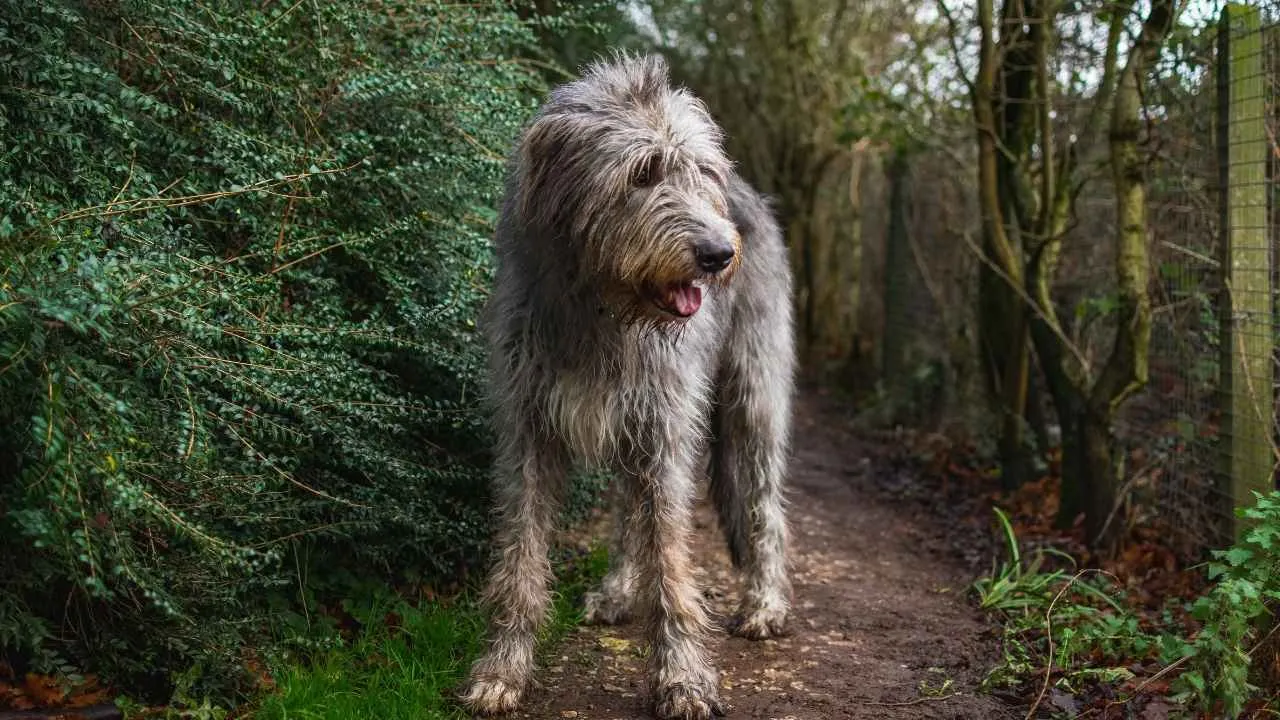
The Irish Wolfhound is the tallest of all AKC breeds, known for their calm, dignified, and gentle nature. Originally bred as fearless big-game hunters, they are now serene, loyal companions. Their size and graceful build make them impressive, yet affectionate family dogs.
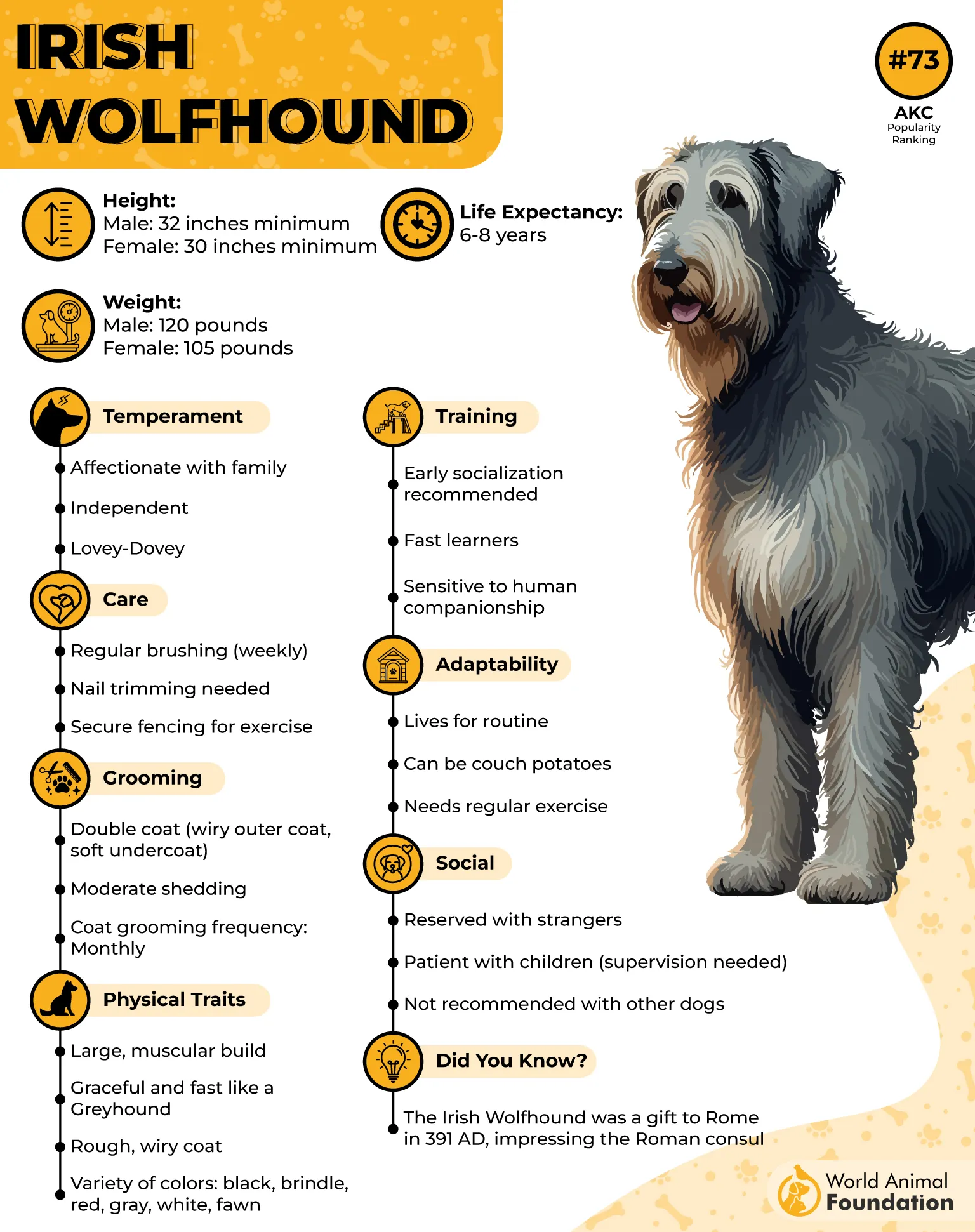
Lifespan and Health Concerns
The Irish Wolfhound has a short lifespan, typically only six to eight years. They are more prone to serious health problems such as bone cancer, gastric dilatation-volvulus (GDV), heart disease, hip dysplasia, and elbow dysplasia, as per WebMD. Early diagnosis and preventive care can greatly improve their quality of life.
Tips for Owners
Start early socialization and positive training.
Maintain daily exercise and a healthy weight.
Schedule yearly EKGs and regular vet checkups.
Follow vaccination schedules to prevent infections.
Treat joint or bone issues with rest, medication, or physical therapy as advised by a vet.
4. Bullmastiff
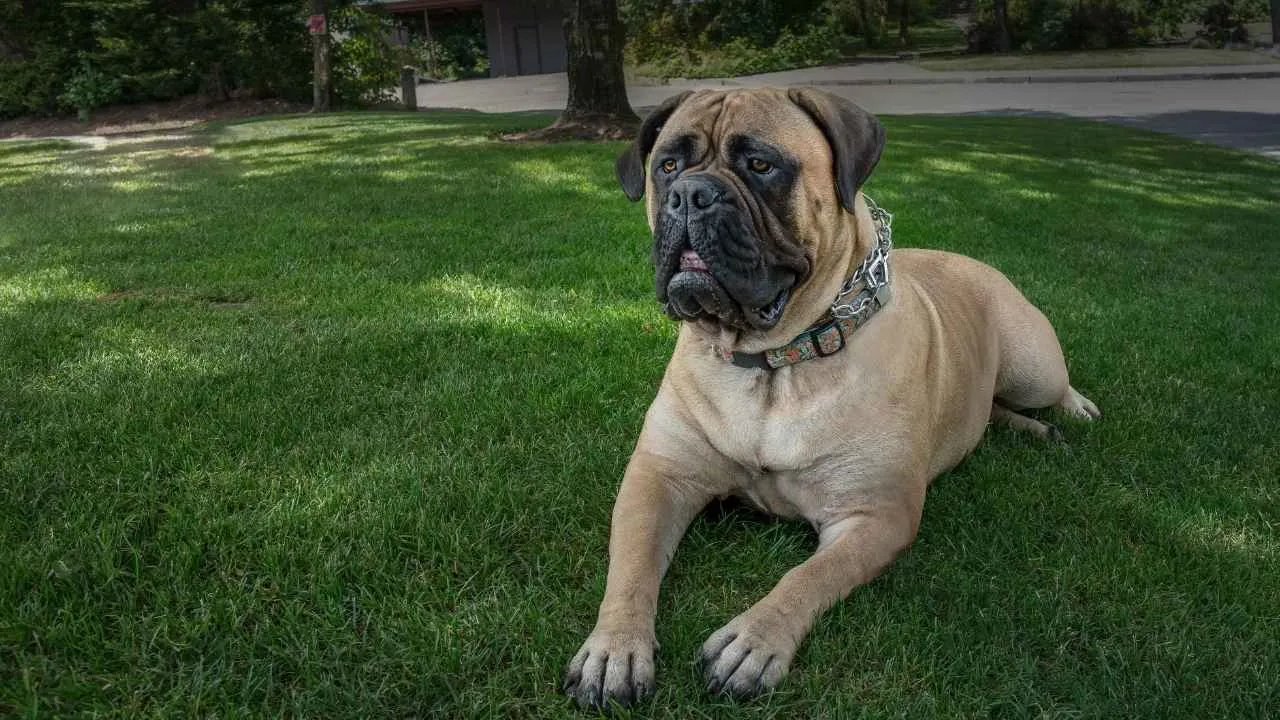
The Bullmastiff is one of the large and giant breeds, known for its loyalty and protective nature. Despite their size, they form strong bonds with their families and are gentle with children, making them excellent family dogs.
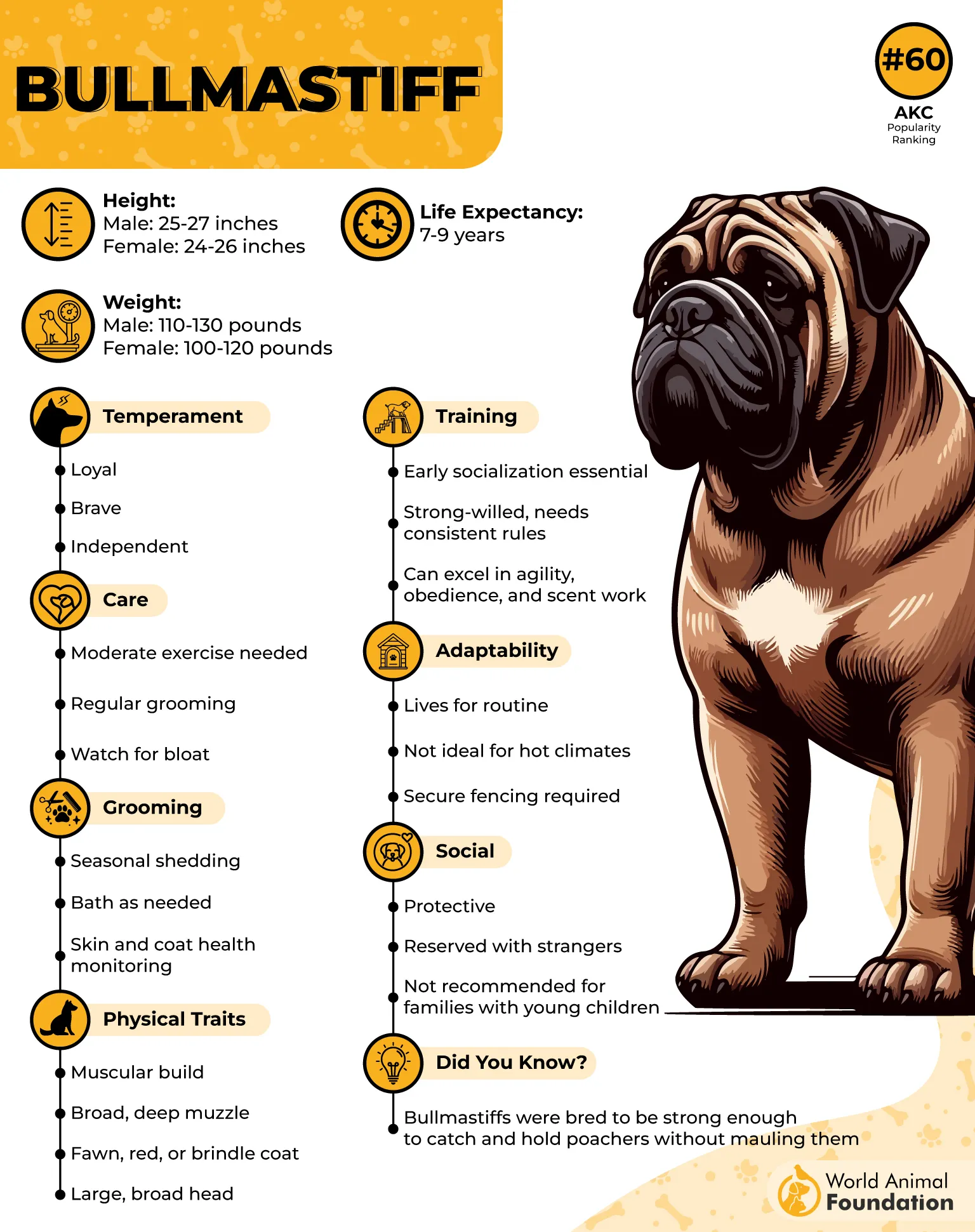
Early obedience and socialization training are essential, as Bullmastiffs can become stubborn and overprotective without consistent guidance.
Lifespan and Health Concerns
The Bullmastiff typically lives between seven and nine years, a shorter lifespan compared to smaller breeds.
They are prone to health issues like dilated cardiomyopathy (DCM), subaortic valvular stenosis (SAS), hip dysplasia, lymphoma, progressive retinal atrophy (PRA), and entropion—a painful eyelid condition that often requires surgery. Responsible breeding and regular checkups are key to early detection.
Tips for Owners
Begin leash and boundary training early to manage their strength.
Limit intense exercise in puppyhood to protect growing joints.
Ensure regular heart and eye checkups for early disease detection.
Provide a nutrient-rich diet with omega-3s for joint and heart support.
Maintain a calm, structured home to balance their protective nature.
5. Saint Bernard
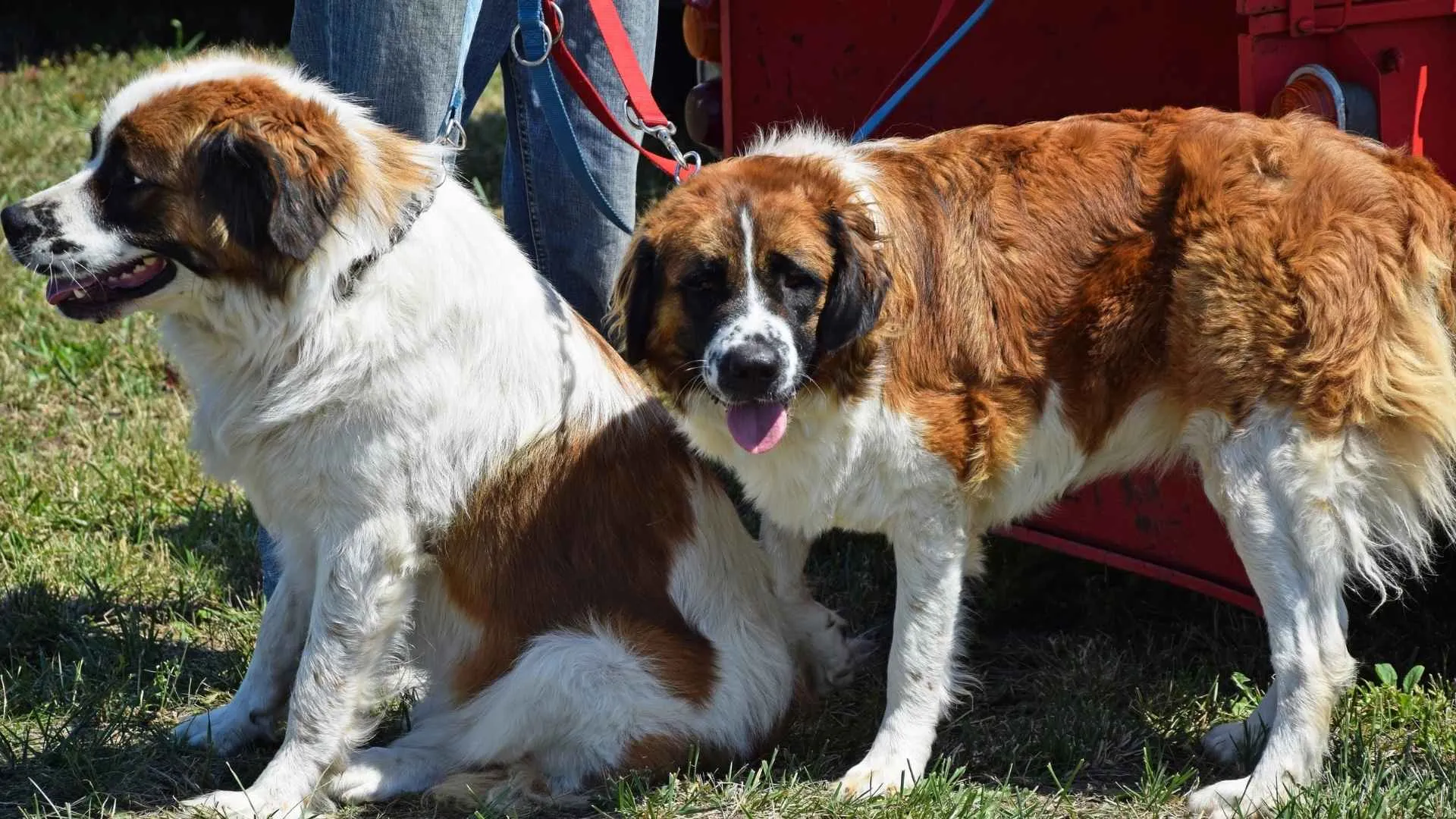
The Saint Bernard is a gentle giant with a loving, patient nature that makes it a wonderful family companion. Their strength and gentle disposition require consistent, reward-based training to ensure they stay well-mannered and manageable as adults.
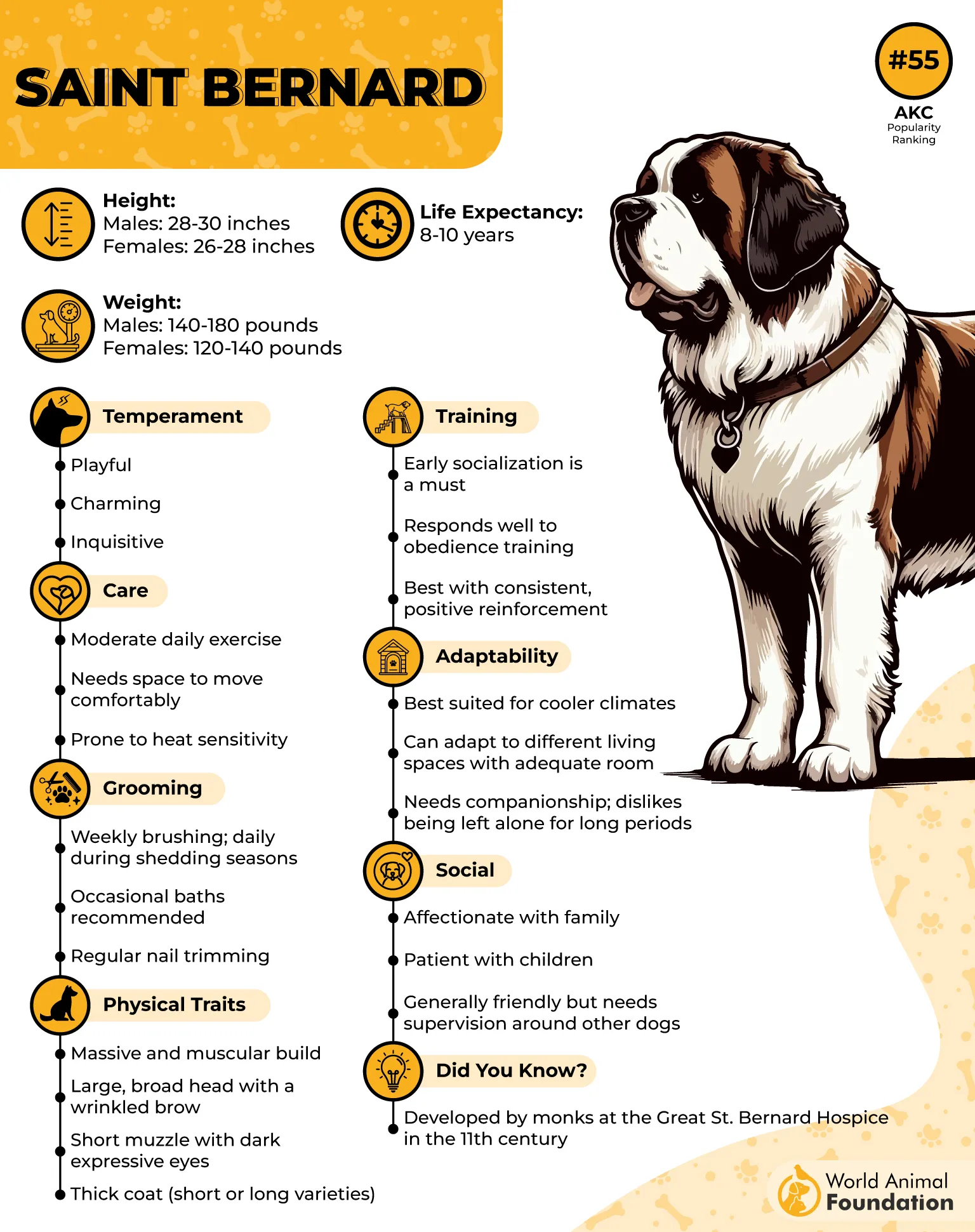
Lifespan and Health Concerns
Saint Bernards’ average life span is around 8–10 years, a typical span for larger dogs. Their large frames make them vulnerable to hip and elbow dysplasia, GDV (bloat), heart conditions like DCM, and bone cancer.
They may also experience joint pain, skin fold infections, and ear problems if not properly cared for as per PDSA. Scheduling regular vet visits and conducting health tests before breeding helps identify potential concerns before they become serious.
Tips for Owners
Keep your dog lean to ease pressure on joints and lower the risk of orthopedic issues
Feed smaller, frequent meals to help prevent bloat.
Clean skin folds and ears weekly to avoid infections.
Provide low-impact exercise to strengthen muscles without stressing bones.
6. Newfoundland
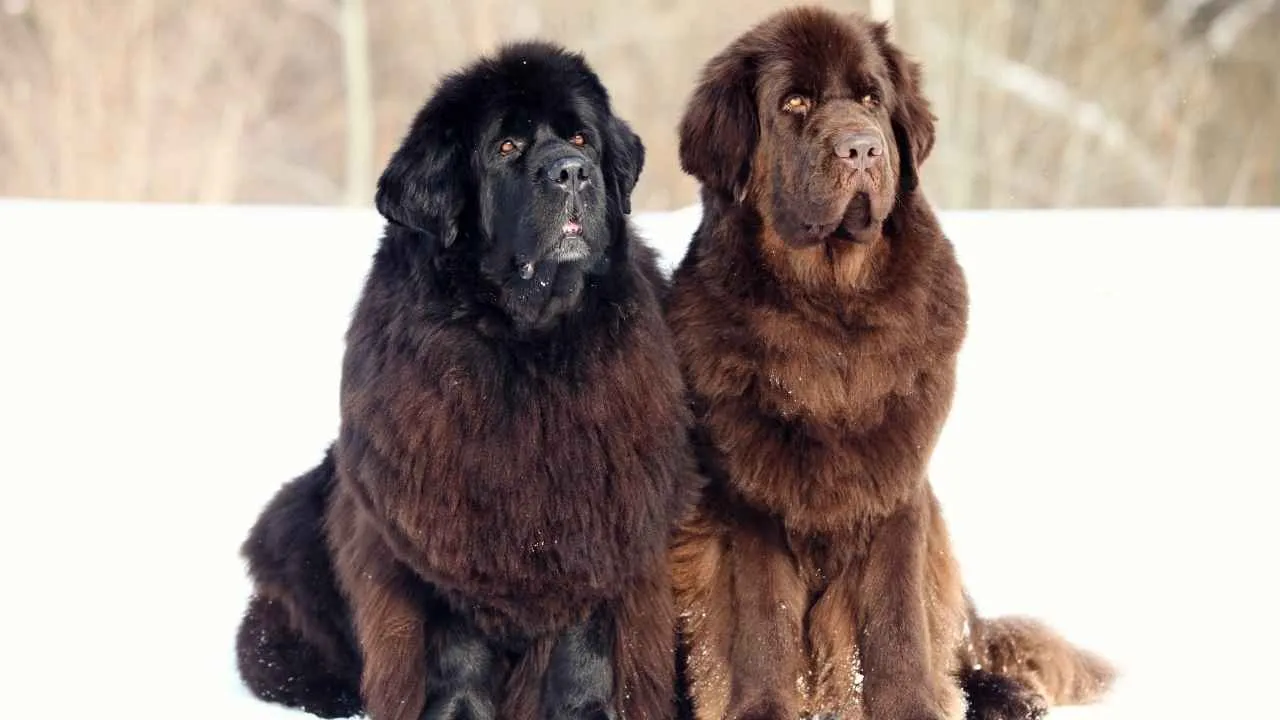
The Newfoundland, affectionately known as the “Newfie,” is a gentle giant with a calm and affectionate personality. They are also known as the nanny dog because they are great with children and protect them.
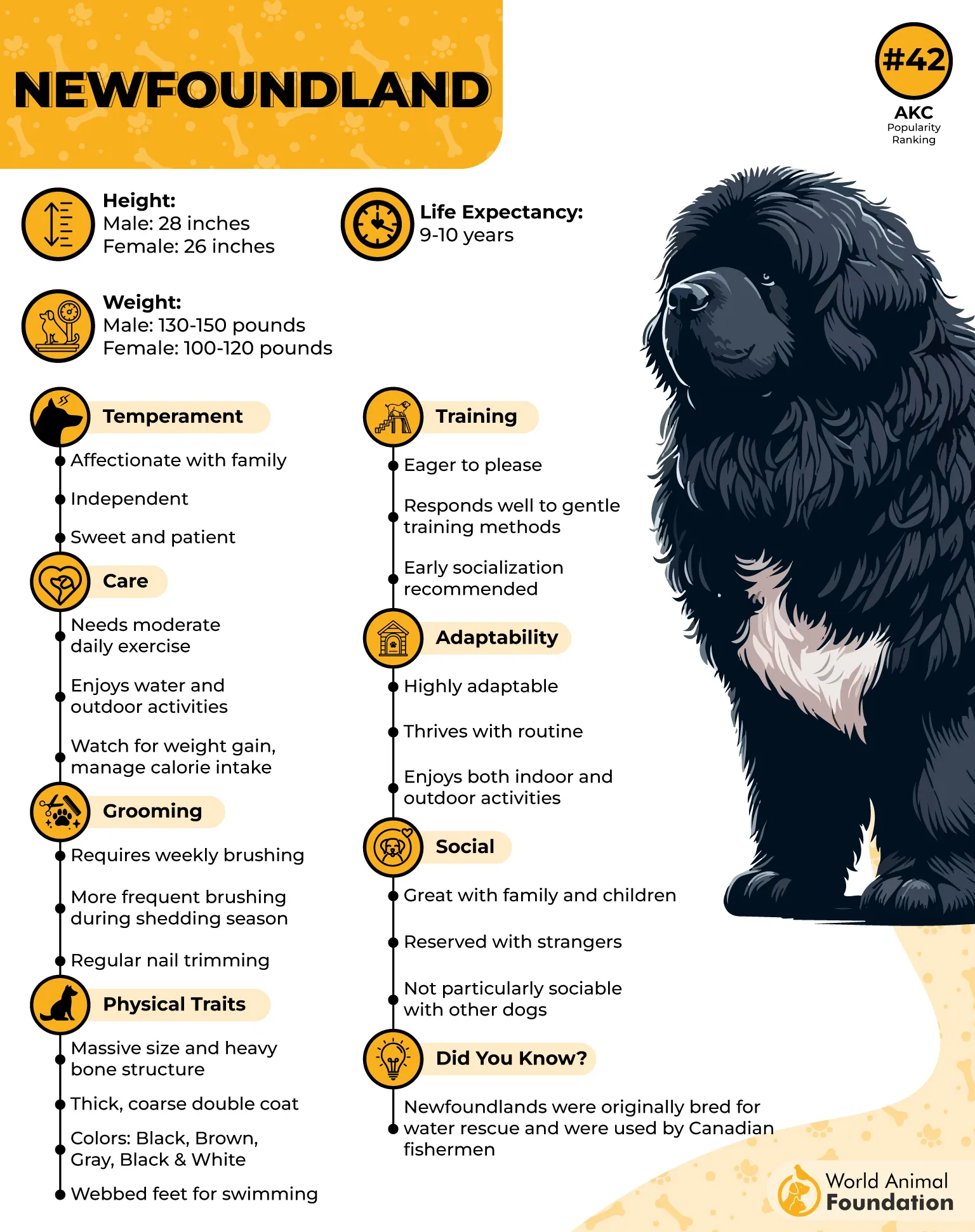
Originally bred as a working and rescue dog, this loyal breed is famous for its patience and devotion to family life.
Lifespan and Health Concerns
However, their massive build and loving disposition come with a relatively short lifespan of 8–10 years. Newfoundlands are prone to serious health conditions such as hip and elbow dysplasia, gastric dilatation-volvulus (bloat), heart disease, bone cancer, and hypothyroidism.
They may also face skin allergies and eyelid problems like entropion and ectropion, which require careful management. Early screening, preventive care, and responsible breeding can help minimize these risks.
Tips for Owners
Avoid over-exercising puppies to overcome joint problems
Feed smaller, frequent meals to reduce the risk of bloat.
Keep skin folds and eyes clean to prevent irritation and infection.
Schedule yearly vet checkups, including heart and thyroid tests.
7. Rottweiler
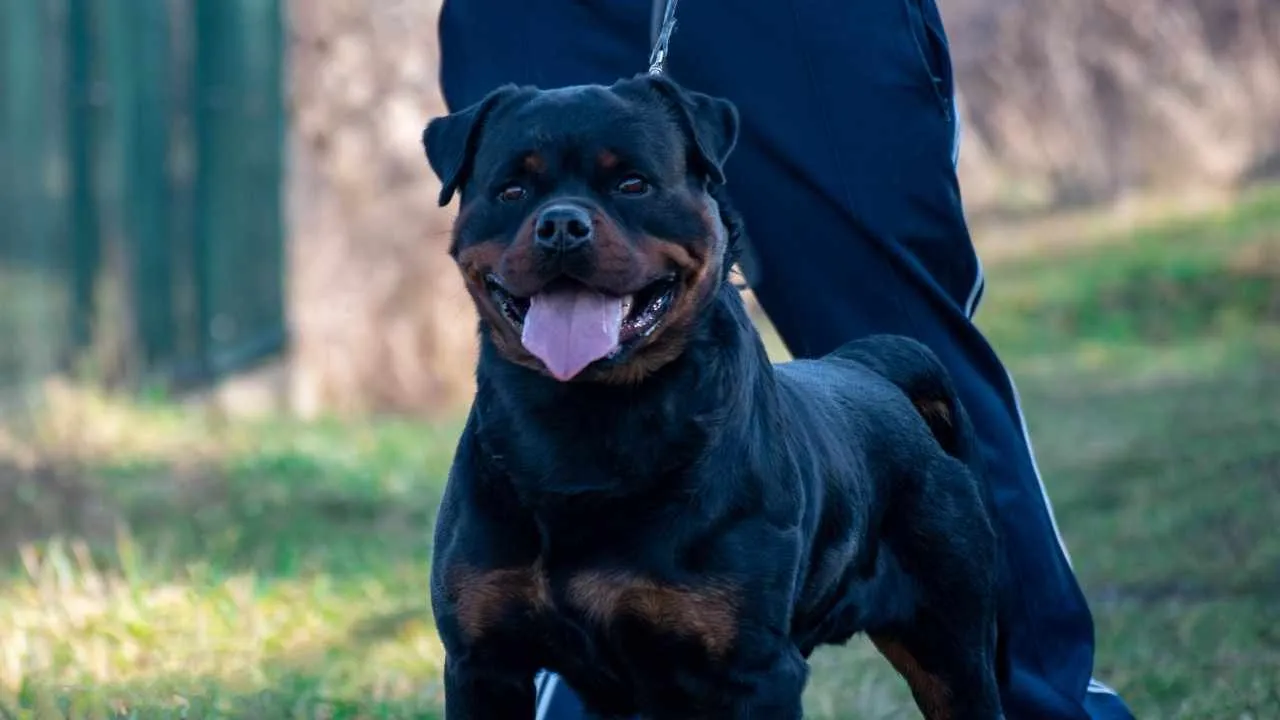
The Rottweiler is a muscular, powerful breed known for its intelligence, loyalty, and protective instincts. When well-trained and socialized, they make excellent guardians and devoted family members. Their strength demands responsible ownership, especially in large homes with active environments.
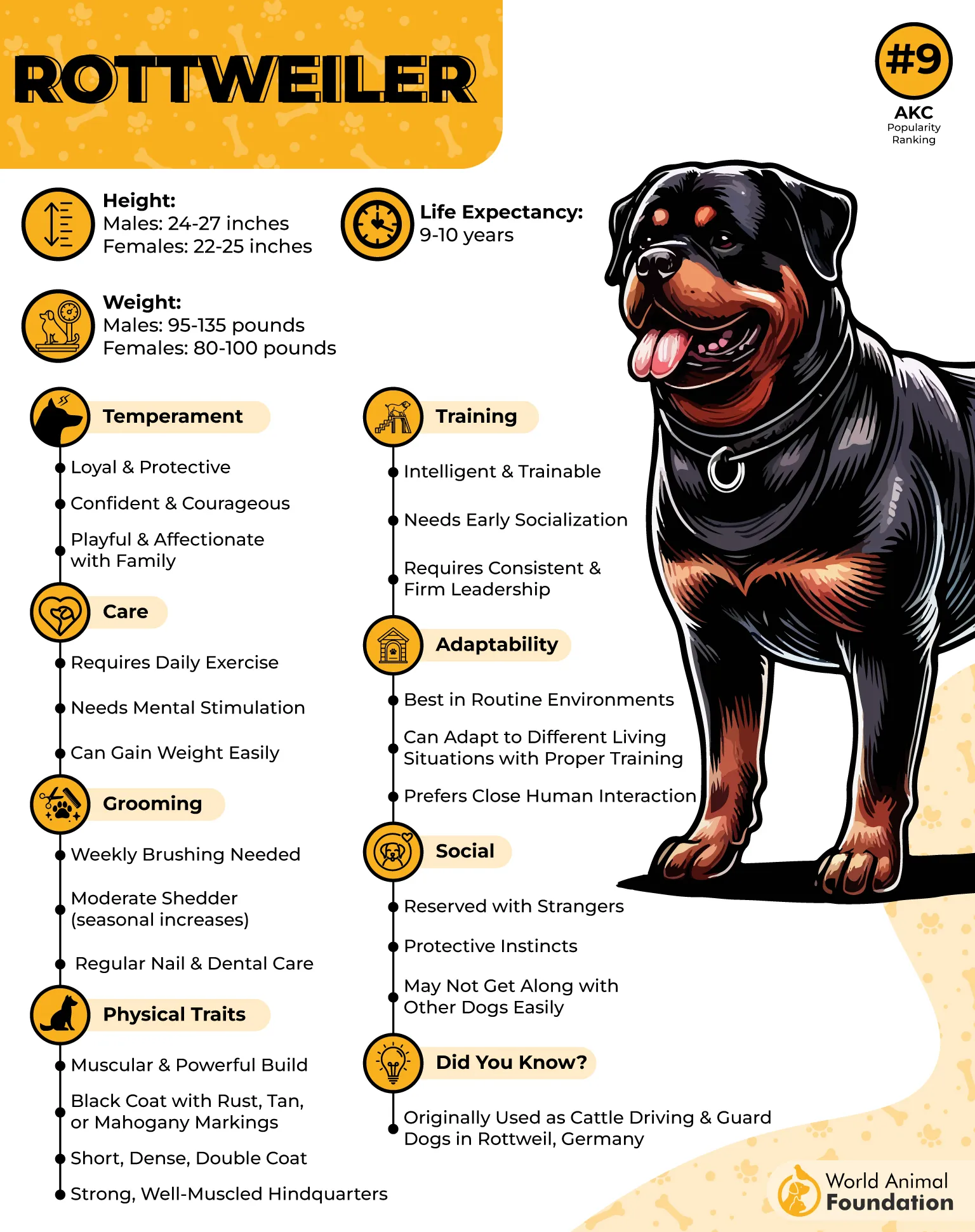
Lifespan and Health Concerns
Rottweilers generally live 9–10 years, though large size and predisposition to health issues often shorten that span.
They face several serious conditions, such as hip and elbow dysplasia, osteosarcoma (bone cancer), gastric dilatation-volvulus (GDV or bloat), entropion, subaortic stenosis (a heart condition), and ligament injuries.
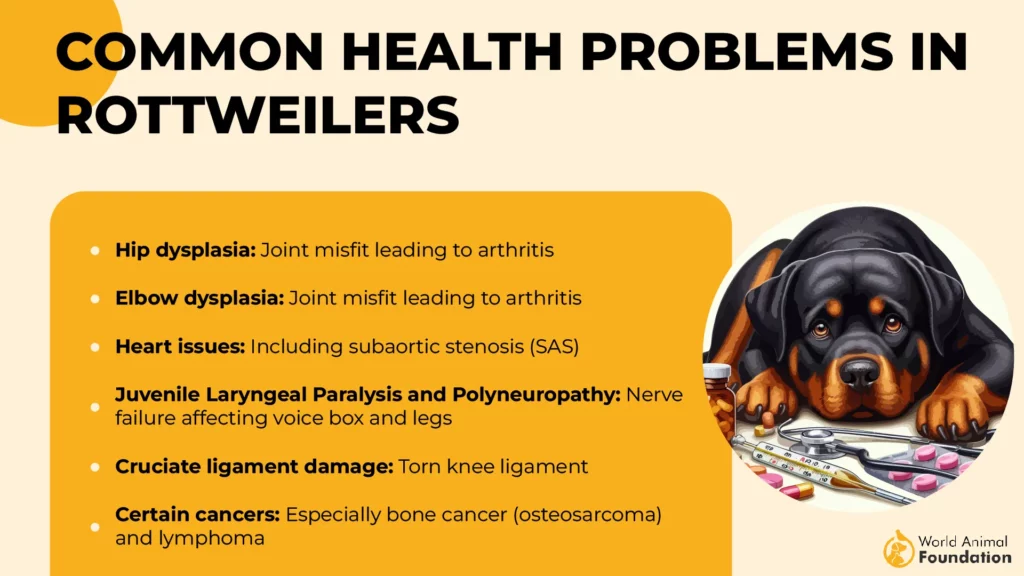
Tips for Owners
Introduce training and socialization early to harness their protective nature positively.
Feed smaller, frequent meals and avoid rigorous activity after eating to reduce GDV risk.
Maintain a lean body condition to ease strain on joints and reduce dysplasia risk.
Schedule regular veterinary exams, heart screenings, and orthopedic checkups.
Monitor for limping, swelling, or behavioral changes that may indicate cancer or joint injury.
Conclusion
While it’s heartbreaking to know that some of our beloved canine companions have shorter lifespans, understanding their health risks helps us give them the best possible care. Breeds like the Newfoundland, Rottweiler, Great Dane, and others may live fewer years, but their loyalty, affection, and companionship make every moment worthwhile.
With proper nutrition, regular exercise, early health screenings, and plenty of love, owners can help their dogs live longer, healthier, and happier lives. After all, it’s not the length of time we share with them that matters most — it’s the unconditional love and joy they bring into our homes every single day.


